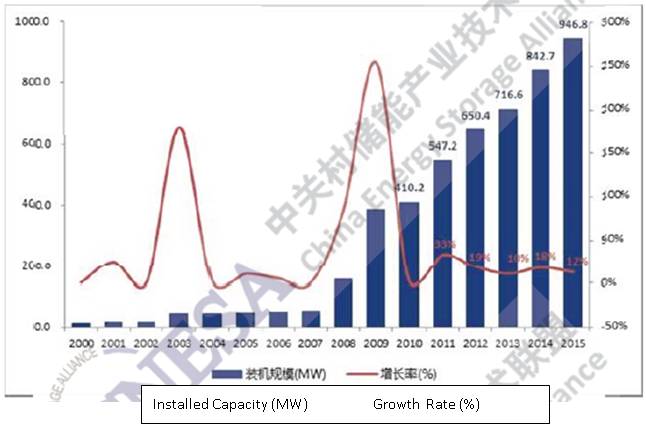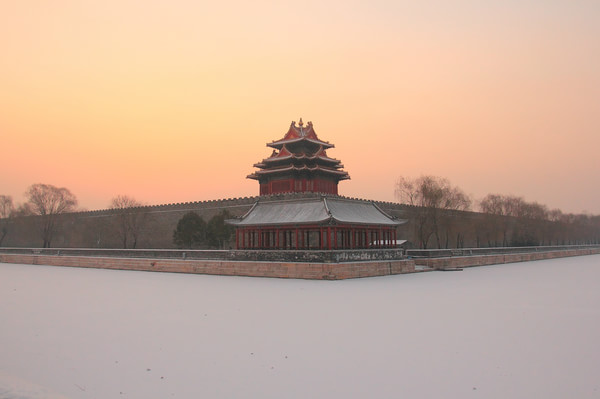Since the launch of city-wide demand-side electricity management trials across China in 2013, the cities of Beijing, Shanghai, Suzhou, and Foshan have established their own demand response resource pools. Jiangsu Province also began demand response pilot spanning the entire province, and in the summer of 2016, implemented the world’s single largest (by load volume) demand response event to date. Through three years of trial periods, China’s demand response programs have largely been co-administered by the government and grid enterprises. Large-scale load aggregators have also played a supporting role integrating both business and residential power users, and several business and residential users have also taken the initiative to participate in demand response programs directly. In this article, we will provide an overview of Beijing’s city-wide demand response pilot as well as provide an outlook for the implementation of future demand response programs in China.
Beijing's demand response program was coordinated through the online DSM platform.
Beijing Demand Response Pilot Implementation:
Large-scale load aggregators played an important role in systematically organizing Beijing’s demand response participants who opted-in to the program. Users with the capabilities to manage their own energy resources, however, were encouraged to participate independently to encourage the spread of energy informatization. The program was modeled on a six-step system: 1) contract agreement; 2) demand response event dispatch; 3) load allocation; 4) response feedback; 5) load reduction implementation & monitoring; and 6) verification.
The efforts of the 2015 pilot focused on the best ways to ensure stable grid operations and air quality during high-pollution periods. In the 2015 pilots, Beijing’s Municipal Electricity Demand-Side Management Platform served as the base for data collection and implementation of demand response events, though, alternative models comparing government-lead versus grid enterprise-lead implementation were also considered and explored.
Beijing DR trial implementation organization.
Platform Organization:
The demand response software accessible via Beijing’s Municipal Electricity Demand-Side Management online platform was used to serve load aggregators, collect the 15-minute interval real-time monitoring of user responses, set day-ahead response plans, notify aggregators of demand response plans, and request feedback to allocate the demand response load volume. In the event that demand response feedback indicated the currently allocation could not meet dispatcher needs, the demand response software automatically adjusted the allocations to meet the requirements and implement the plan. After the end of a demand response event, the software system calculated the baseline load volume and carried out secondary calculations to correct for incomplete data or errors.
Compensation:
In the 2015 pilot, compensation levels were determined by participation category, providing compensation based on how far in advance users were notified before a demand response event. Notice times were 30-minute advance notice, 4 hours advance notice, and 24 hours advance notice. The 30-minute advance notice group received a payment of CNY 120/kW, the 4-hours advance notice received CNY100/kW, while the 24-hours advance notice group received CNY80/kW.
Program Principles:
The 2015 demand response commitment contract clearly states that the number of demand response events will not exceed 10, with each event’s load reduction to not exceed the total capabilities of the aggregated resource pool. The compensation was allocated according to the actual hourly response during each demand response event. Demand response events occurred only during the summer and winter seasons, with compensation calculated individually per season, with the total payment made after the end of the winter season. The total demand load was calculated according to the principles set forth by the National Development and Reform Commission in conjunction with the Beijing Municipal Power Demand-Side Management Service Platform. A third-party made additional verifications of response implementation, and payments were made in line with the established payment methods.
Implementation Highlights:
In the summer of 2015, the Beijing Municipal Grid experienced record-breaking grid loads.
On August 12 and 13, grid dispatchers organized 17 load aggregators and 74 individual users to participate in a demand response event, shaving 57 MW off of the peak load.
Between August 20 and September 2, 2015 two large events hosted in Beijing, the 70th Anniversary Celebration Commemorating the end of WWII along with the World Track and Field Championships represented a massive strain on the grid load. Beijing officials organized load aggregators and individual users to decrease demand during peak hours 2-3 hours each day over a 10-day period, ultimately shaving an accumulated 430 MW from the grid load.
Additionally, in winter 2015, the city municipal government issued several severe smog alerts. Beginning December 1st, officials organized 19 load aggregators and 136 individual users participated in seven demand response events lasting 14 hours each. According to preliminary estimates, this achieved a largest single-event load reduction of 170 MW.
User Analysis:
Power users participating in the 2015 Beijing demand response pilot were divided among industrial users, public facilities, and residential users. According to the cumulative data for the year, industrial users represented 93% of response volume, mainly in the manufacturing and mining sectors. Public facilities, including office buildings, hotels, business buildings, and sports arenas made up the other 7% of response volume. Residential users made up a relatively small portion of the 2015 resource pool with 0.4% of response volume, but this does not diminish the value of integrated residential response resources as a meaningful and important asset in future demand response programs.
Response Strategy:
During response events, industrial users controlled their electricity use through adjusting the use of manufacturing equipment. A portion of industrial users also adjusted climate controls, lighting, and ventilation. Public facilities generally acted in demand response events by modifying temperature controls and lighting, some even drawing from energy storage reserves to power their operations.
There were three load aggregators that combined residential users as a demand response resource. Among them, one aggregator used heating and cooling controls to organize residential users in a small apartment block to participate in demand response. The other two residential aggregators used smart controls of electric appliances including air conditioners, hot water heaters, and water coolers to coordinate response steps remotely.
Thoughts on Next Steps:
As China is in the midst of upheavals reforming the electricity system and demand-side management, demand response is very likely to remain in the trial mode for the near future. As they stand, current electricity markets are unable to support full adoption of demand response markets, meaning governments and grid enterprises will still play a key role in the upcoming years.
The trial stages have afforded provincial and municipal governments the chance to experiment with different implementation methods. One innovative policy in Jiangsu Province collects revenue from electricity sales during critical-peak times* to support the implementation of demand response programs. This reflects an economic equality among electricity price earnings and demand response value. Based on this method, many other cities could set up demand response program funds, and ensure applications of demand response.
The Need for Marketization:
Not all participants in demand response are driven my free-market principles, as in some administrative regions some users are effectively forced to participate to avoid even greater economic losses through imposed fines and penalties. While on the one hand, it’s important to begin the transformation to increase marketization of demand response instead of emphasizing fine-tuning the operational logistics, there remains much work to be done regarding investment costs, earnings calculations, and economic incentives as China undergoes series of power system reforms.
Conclusion:
During the trial period each trial city called upon load aggregators and electricity users to carry out demand response events but cutting down on their respective loads. Promising future directions include, participation via price competition, and the use of smart technology to coordinate alerting users of an event, the duration of the event, and controlling electric appliances. The demand response platform likewise can improve through providing more concrete services for government agencies, load integrators, and electric users in order to achieve an optimal and efficient coordinate demand response effort and ultimately ensure safe grid operations.
2016 and Beyond:
The Beijing municipal government has spent the 2016-year reviewing data from the 2015 trials. There was no demand response program for the 2016 period. We are awaiting announcements for plans for a potential 2017 demand response pilot continuation.
*Electricity price designation for the most expensive portion of “on peak” electricity.
This article has been translated from the original Chinese.



























